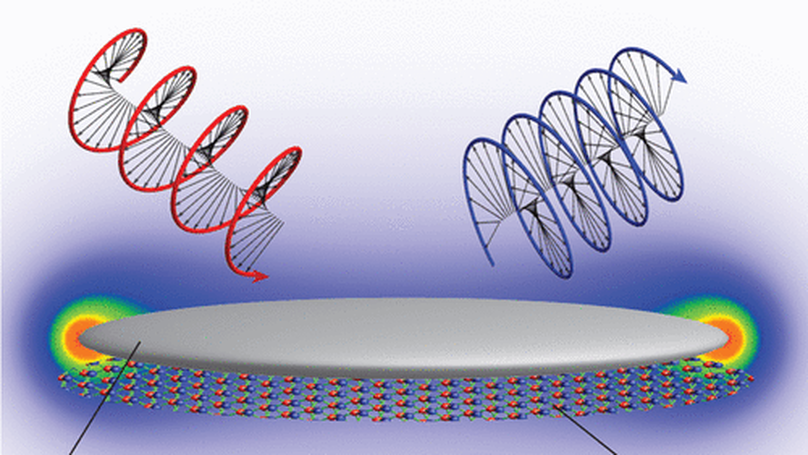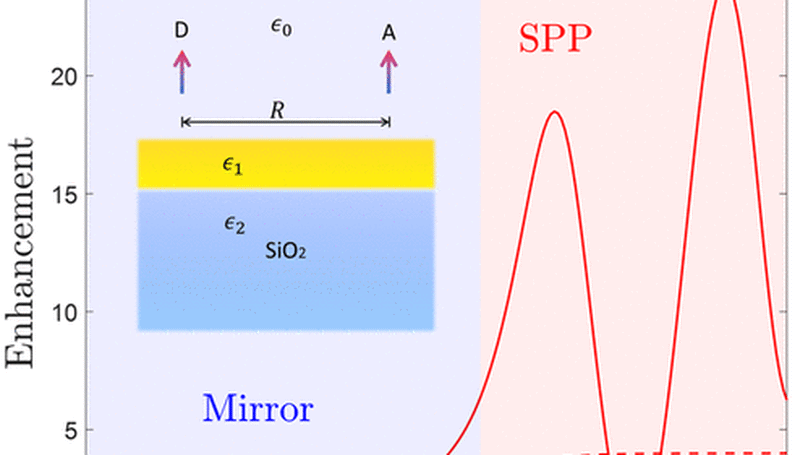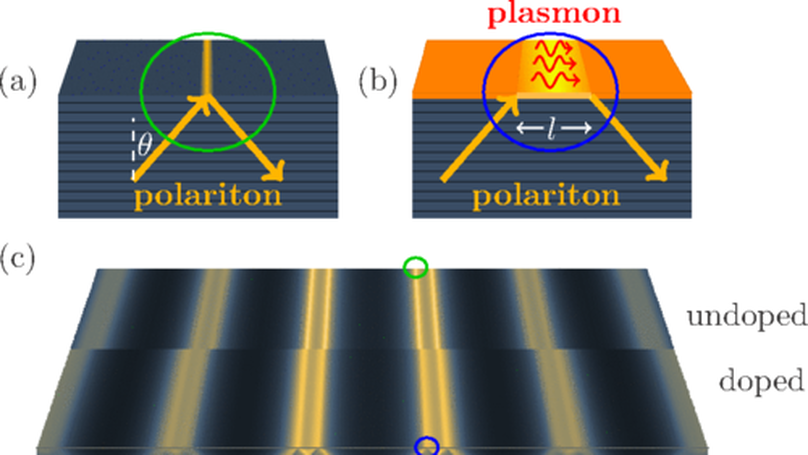量子奈米光學
👋 Welcome to 量子奈米光學研究團隊
你對研發有興趣,想遠離產線嗎? 喜歡思考物理圖像、寫寫程式、推導數學、演算法、人工智慧等理論更甚於生產與量測。
本團隊以理論與數值方式研究以下領域:
- 奈米光學
- 量子光學
- 反向設計、人工智慧、量子計算
我們使用物理理論、演算法、數值模擬(python)、量子電腦、神經網路、機器學習 等方法來研究前端的光電課題如量子光的特性與運用、奈米光學元件設計、量子與機器學習用於物理模擬
我們目前的研究課題包括:
- 量子光學:我們研究光的量子與熱力學性質、量子感測、量子光學元件
- 奈米光學聚焦:研究如何將光微縮至奈米尺度、奈米光的非古典特性、主動式奈米電漿學
- 量子計算與最佳化:我們使用量子演算法結合機器學習設計超越古典的光學元件如光罩、矽光子、雷射、量子光學元件
- 機器學習與反向設計:研發與使用最佳化演算法、機器學習、physics-informed neural network進行光電元件的反向設計
Congratulation!
我們在結合量子計算、奈米光學、反向設計提出了新的量子光學換能器,吳致盛教授榮獲了2024 Google Academic Research Award (GARA)
理論研究的日常
歡迎博士生、碩士生與大學專題生加入我們的團隊!有興趣的同學歡迎來聊聊 Contact! 我們主要的研究方式為理論推導、使用模擬工具與寫程式,並訓練學生具備分析與瞭解物理圖像的能力,目前的研究計畫可參考 Projects。本團隊適合以下背景的同學(以及所有具有熱忱興趣的同學!)
- 物理:以理論凝態物理的角度,運用量子力學、固態物理等研究奈米尺度光與物質的交互作用。
- 光電:以光學與電磁學角度,結合量子力學,運用在量子科技。
- 電機與資工:以電磁學與數值方法發展適合古典與量子光學的計算方法,分析研究量子光學元件。
- 數學:以解析解、特殊函數、複變與偏微分方程等數學,結合數值方法,發展高效率的計算工具。
我們的目標在培養運用跨領域知識(物理、光電、電機與數學)、 對於新世代光電元件具有基礎研發能力與遠見的人才!
誠徵博士後
歡迎有理論物理或相關背景的博士,想跨入運用的領域,想結合理論與有潛力有遠見的光學領域,我們有適合你題目!如果你有深厚的理論基礎,正在尋找肥沃廣大的研究方向,我有許多世界上最新最有洞見的想法與計畫,適合有根底的你:
- 量子奈米光的非古典性質
- 量子機器學習與反向設計
有興趣請直接聯絡我Contact!
Biography
吳致盛是國立陽明交通大學光電系助理教授。他的研究背景是理論凝態物理。目前的研究方向是奈米尺度下,光學與量子材料的交互作用。 研究的主題包含: 量子光學、奈米電漿學、拓樸光子晶體、二維材料光學特性、計算電磁學等。
- 理論物理
- 量子奈米光學
- 量子光學
- 理論凝態物理
- 光子晶體
- 計算電磁學
-
PhD in Physics, 2016
加州大學聖地牙哥分校 UCSD
-
MS in Physics, 2010
國立臺灣大學
-
BSc in Physics, 2006
國立臺灣大學
Experience
Skills
學生技能
80%
100%
80%
Research Highlights

We theoretically study a topological nanospaser, which consists of a silver nanospheroid and MoS$_2$ monolayer flake of a circular shape. The metal nanospheroid acts as a plasmonic nanoresonator that supports two rotating modes, which are coupled to the corresponding valleys of MoS2. We apply external circularly polarized light that selectively pumps only one of the valleys of MoS$_2$. The generated spaser dynamics strongly depends on the size (radius) of the MoS$_2$ nanoflake. For a small radius, the system has only one spasing regime when only the chirally matched plasmon mode is generated, while at a larger size of MoS$_2$, depending on the pump intensity, there are two regimes. In one regime, only the chirally matched plasmon mode is generated, while in the other regime both chirally matched and chirally mismatched modes exist. Different regimes of spaser operation also have opposite handedness of the far-field radiated spaser system. Such a topological nanospaser has potential applications in different areas of infrared spectroscopy, sensing, probing, and biomedical treatment.

We theoretically introduce a topological spaser, which consists of a hexagonal array of plasmonic metal nanoshells containing an achiral gain medium in their cores. Such a spaser can generate two mutually time-reversed chiral surface plasmon modes in the valleys $K$ and $K'$, which carry the opposite topological charges $\pm 1$, and are described by a two-dimensional $E'$ representation of the $D_{3h}$ point symmetry group. Due to the mode competition, this spaser exhibits a bistability$:$ only one of these two modes generates, which is a spontaneous symmetry breaking. Such a spaser can be used for an ultrafast all-optical memory and information processing, and biomedical detection and sensing with chirality resolution.

We investigate resonance energy transfer (RET) between a donor–acceptor pair above a gold surface (including bulk and thin-film systems) and explore the distance/frequency dependence of RET enhancements using the theory we developed previously. The mechanism of RET above a gold surface can be attributed to the effects of mirror dipoles, surface plasmon polaritons (SPPs), and retardation. To clarify these effects on RET, we analyze the enhancements of RET by the mirror method, the decomposition of s- and p-polarization, and the SPP dispersion of charge-symmetric and charge-antisymmetric modes. We find a characteristic distance (approximately 1/10 of the wavelength) that can be used to classify the dominant effect on RET. Moreover, the characteristic distance can be shortened by narrowing the thickness of the thin-film systems, indicating that SPPs can enhance the rate of RET at a short range. The charge-symmetric and charge-antisymmetric modes of the thin films also allow us to engineer the maximum RET enhancement. We hope that our analysis inspires further investigation into the mechanism of RET coupled with SPPs and its applications.

We present a theoretical analysis showing that layered topological insulators, for example, Bi$_2$Se$_3$ are optically hyperbolic materials in the range of terahertz (THz) frequencies. As such, these topological insulators possess deeply subdiffractional, highly directional collective modes$:$ hyperbolic phonon polaritons. We predict that in thin crystals the dispersion of these modes is split into discrete subbands and is strongly influenced by electron surface states. If the surface states are doped, then hybrid collective modes result from coupling of the phonon polaritons with surface plasmons. The strength of the hybridization can be controlled by an external gate that varies the chemical potential of the surface states. We also show that the momentum dependence of the plasmon-phonon coupling leads to a polaritonic analog of the Goos-Hänchen effect. The directionality of the polaritonic rays and their tunable Goos-Hänchen shift is observable via THz nanoimaging.

Moiré patterns are periodic superlattice structures that appear when two crystals with a minor lattice mismatch are superimposed. A prominent recent example is that of monolayer graphene placed on a crystal of hexagonal boron nitride. As a result of the moiré pattern superlattice created by this stacking, the electronic band structure of graphene is radically altered, acquiring satellite sub-Dirac cones at the superlattice zone boundaries. To probe the dynamical response of the moiré graphene, we use infrared (IR) nano-imaging to explore propagation of surface plasmons, collective oscillations of electrons coupled to IR light. We show that interband transitions associated with the superlattice mini-bands in concert with free electrons in the Dirac bands produce two additive contributions to composite IR plasmons in graphene moiré superstructures. This novel form of collective modes is likely to be generic to other forms of moiré-forming superlattices, including van der Waals heterostructures.

We calculate the differential, total, and transport cross-sections for scattering of two-dimensional massless Dirac electrons by a circular barrier. For scatterer of a small radius, the cross-sections are dominated by quantum effects such as resonant scattering that can be computed using the partial-wave series. Scattering by larger size barriers is better described within the classical picture of reflection and refraction of rays, which leads to phenomena of caustics, rainbow, and critical scattering. Refraction can be negative if the potential of the scatterer is repulsive, so that a $p$-$n$ junction forms at its boundary. Qualitative differences of this case from the $n$-$N$ doping case are examined. Quantum interference effects beyond the classical ray picture are also considered, such as normal and anomalous diffraction, and also whispering-gallery resonances. Implications of these results for transport and scanned-probe experiments in graphene and topological insulators are discussed.
Maps
Contact
- jwu@nycu.edu.tw
- (03)5712121#56365
- 田家炳光電大樓413室, 大學路1001號, 新竹, 台灣